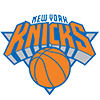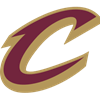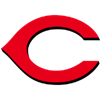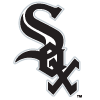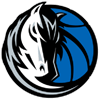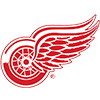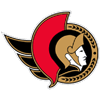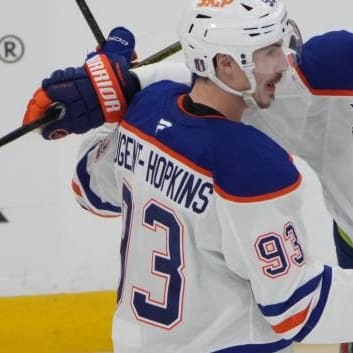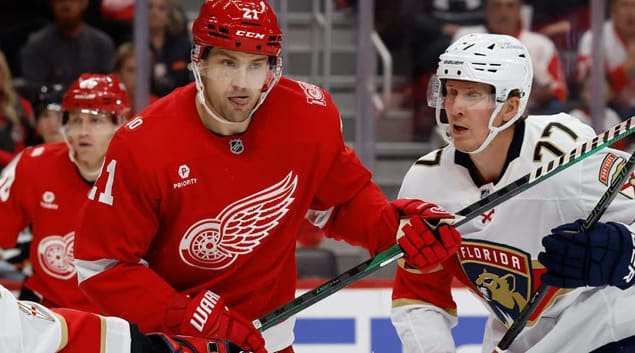This is the first of our annual two part series detailing the top prospects in the NHL entering the 2022-23 season.
A couple quick notes on this year's list before we get started.
- There were about 90 names I felt certain had to be in the top 100. The final ten names and the first half dozen who didn't make the cut can be arranged in almost any order.
- It's hard for me to remember the latter part of the top 200 being so difficult to rank. The final cuts -- Dmitri Rashevsky (RW, WPG), Prokhor Poltapov (RW, BUF), and Ayrton Martino (LW, DAL) -- should probably have made it somewhere, but I simply ran out of room. If you want to know who No.'s 201-203 are, those are the three.
And onto the rankings...
51) Scott Perunovich (D, STL): Perunovich made his long-awaited NHL debut this past season for St. Louis, although wrist surgery in March derailed his year, marking the second straight season in which he required a surgical procedure which forced him to miss a significant amount of time. He ended up posting six assists in 19 games with the Blues in addition to 22 points in 17 games with their AHL affiliate in Springfield. Perunovich is a heady defenseman in the mold of Adam Fox. He lacks elite physical gifts, but his hockey IQ is through the roof and his reads are exceptional. My guess is that he would be just as effective as
This is the first of our annual two part series detailing the top prospects in the NHL entering the 2022-23 season.
A couple quick notes on this year's list before we get started.
- There were about 90 names I felt certain had to be in the top 100. The final ten names and the first half dozen who didn't make the cut can be arranged in almost any order.
- It's hard for me to remember the latter part of the top 200 being so difficult to rank. The final cuts -- Dmitri Rashevsky (RW, WPG), Prokhor Poltapov (RW, BUF), and Ayrton Martino (LW, DAL) -- should probably have made it somewhere, but I simply ran out of room. If you want to know who No.'s 201-203 are, those are the three.
And onto the rankings...
51) Scott Perunovich (D, STL): Perunovich made his long-awaited NHL debut this past season for St. Louis, although wrist surgery in March derailed his year, marking the second straight season in which he required a surgical procedure which forced him to miss a significant amount of time. He ended up posting six assists in 19 games with the Blues in addition to 22 points in 17 games with their AHL affiliate in Springfield. Perunovich is a heady defenseman in the mold of Adam Fox. He lacks elite physical gifts, but his hockey IQ is through the roof and his reads are exceptional. My guess is that he would be just as effective as Torey Krug at running the St. Louis power-play for roughly a fifth of the price. I'll be shocked if Perunovich doesn't have a full-time role with the Blues this coming season
52) Aatu Raty (C, NYI): Raty was pretty poor in his 2021 draft year relative to expectations, but he had zero business dropping to the 52nd overall selection where the Islanders happily nabbed him. Raty was loaned from his Liiga team in Karpat to Jukurit in late October and responded with 40 points in 41 games the rest of the way. He finished the season playing with AHL Bridgeport. Raty's not a great skater and his game lacks pace at times, but he's 6-foot-2 with top-six offensive abilities. He's going to be hard pressed to be the long-term difference maker many expected him to be a handful of years ago, but I still think he has a chance to be a productive NHL player. Of course, on the flip side, Raty's floor is quite low. I'm intrigued to see how he performs in his first full season in North America.
53) Nick Robertson (LW, TOR): Robertson had 16 goals and 28 points in 28 AHL games in 2021-22 despite playing the entire season at age 20, so it's difficult to say his year was anything other than a success from a production standpoint. That said, Robertson failed to make an impact in 10 games with the Maple Leafs, scoring just a single goal over that span. The Leafs are a deep club, but they always operate right at the salary cap, and I find it shocking they couldn't find a place for a kid with legitimate top-six offensive skills whose cap hit is just $796,667. In some ways I get it. Robertson would be wildly miscast in a bottom-six role, so Toronto just left him in the minors to get a ton of playing time. I think we need another full season to gauge whether Robertson's future is in Toronto. One thing that is for certain is Robertson will have a ton of trade value if the Leafs decide to move on. He's young and excellent with the puck in terms of both stickhandling and creativity in making plays.
54) Jiri Kulich (C, BUF): Kulich was arguably the best player at the recently completed World U18's, leading everyone in goals (nine in 11 games) in addition to being named tournament MVP. His production in the top Czech league this past season was fine (nine goals, 14 points in 49 games) considering he played virtually the entire year at age 17. Kulich looks like a "clean" offensive prospect. I wouldn't call him elite in any single area, but it's difficult to poke holes in his game. Kulich's greatest attribute is his finishing ability around the net, and he may ultimately be better suited for the wing. He looks like a high-floor guy with the ability to fill a variety of different roles at the NHL level.
55) Isaac Howard (LW, TB): Always on the lookout for high-end skill, Tampa Bay was immediately drawn to Howard, who was the most dangerous forward on the US NTDP roster on many nights this past season, at No. 31 overall this past July. He possesses offensive creativity few players in this draft could match. The upside is obvious, but there are some red flags here as well. Howard isn't big at just 5-foot-10, and while his skating is average, he doesn't possess the breakaway speed most scouts look for in a smaller player. He's strictly limited to the wing, and it's fair to wonder how much he'll help an NHL club if he isn't putting up points. There isn't a huge margin for error here, leaving Howard—who is committed to Minnesota-Duluth—as a high-risk/high-reward option.
56) Thomas Bordeleau (LW, SJ): Bordeleau was one of my favorite players in the 2020 NHL Entry Draft. I saw a guy with a legitimate all-around skill set who plays considerably bigger than his 5-foot-10 size. For the life of me I couldn't figure out how he lasted to No. 38 overall, but the Sharks -- who have made some questionable draft picks over the years -- needed a break and they got one here. Bordeleau had another fantastic year in his sophomore season at the University of Michigan in 2021-22, averaging exactly a point-per-game over the course of 37 contests. He signed with the Sharks in April and finished the year splitting time between San Jose (five assists in eight games) and the team's AHL affiliate (three assists in two games). Bordeleau can play anywhere in a lineup. He has top-six offensive abilities along with the smart and work ethic to fill a complementary role. I love him and project him as a full-time NHL regular starting this coming season.
57) Ivan Morozov (C, VGK): Morozov split his KHL campaign between SKA St. Petersburg and HK Sochi this past year, posting five goals and 13 points in 22 games. Perhaps seeing the writing on the wall, SKA limited Morozov's role after he was a key player for the club the season prior. He signed his entry-level deal in late April and got in a handful of games with Vegas' AHL affiliate in Henderson before the 2021-22 campaign ended. SKA is arguably the most powerful organization in the KHL and the fact the Golden Knights were able to get Morozov signed just a handful of years after taking him No. 61 overall in 2018 is huge for the club. The only flaw in Morozov's offensive game is the fact he doesn't have a ton of speed. Other than that, he has all the traits you look for in a top-six forward. He's excellent with the puck and capable defensively. A potential 22-year-old difference maker with a $925,000 cap hit is a gift from the gods for the cap-strapped Golden Knights.
58) Filip Mesar (RW, MTL): If you're looking for a player with high-end speed who plays with all kinds of pace, Mesar is your guy. He has played professionally in his native Slovakia the past two seasons, posting 12 goals and 30 points in 73 games. The concern is whether Mesar's game will translate to the NHL level. He's 5-foot-10 and barely 170 pounds, and I wouldn't call him a dynamic offensive player other than the fact he skates well. He's going to have to find a way to consistently weave through the neutral zone without getting eaten alive by bigger opposing defenders. There is no doubt Mesar brings top-notch speed to the table, even for the NHL level, and Montreal will hope he can refine the rest of his game as he continues to develop.
59) Bobby Brink (RW, PHI): A former second-round pick (No. 34 overall) of the Flyers in 2019, Brink exploded this past season at the University of Denver. He led all NCAA players in both assists (43) and points (57). Philadelphia thought enough of Brink's performance to sign him to an entry-level deal in April and stick him in their lineup for the final ten games of the season. Brink managed four assists over that span. Brink's hockey sense is elite. He doesn't skate all that well, but his positioning is always on point, and he always seems to be where he needs to be, particularly in the offensive zone. I'm not sure Brink's game is dynamic enough to project as a true top-six winger, but if not, he projects as an ideal supporting piece who should be able to pot 20-plus goals and 40-plus points in any given campaign. Brink's 2022-23 is going to get off to a late start, as he underwent surgery for a torn labrum in his hip in late July which is expected to sideline him roughly five months.
60) Xavier Bourgault (C, EDM): I thought Bourgault looked better this past season for QMJHL Shawingian than at any point in his draft year of 2020-21. Part of that could be the result of playing for a team which ended up winning the QMJHL Championship, but Bourgault appeared more noticeable and engaged on a nightly basis. His final numbers -- 36 goals, 75 points in 43 games -- were excellent, but there was never much doubt Bourgault was going to be able to generate offense. I may be in the minority here, but I still think Bourgault's ultimate home is on the wing. A right-handed shot, I'd like to see him play on his off side so he has a bit more room, particularly with the man advantage. The Edmonton prospects system lacks depth, but the selection of Bourgault at 22nd overall in 2021 seems like a reasonable one, even if I didn't love the pick at the time.
61) Carson Lambos (D, MIN): The main concern I had regarding Lambos heading into the 2021 Entry Draft was his basic offensive game. Thus, I was very happy to see him post 47 points in 51 games for WHL Winnipeg in 2021-22. I think that was due in part to the fact Lambos was playing for arguably the most talented team in that league, but it was nonetheless nice to see. I'd be shocked if Lambos posted 45-plus points in the NHL, but even 35 or so would give him a ton of two-way value. Lambos skates fine and his compete level has always been good, so he has a real chance to settle in as a long-term, middle-pairing option for the Wild if even a portion of his newly found offensive production sticks.
62) Oskar Olausson (LW, COL): Olausson's decision to play in North America in 2021-22 was a smart one. He split the year between Barrie and Oshawa in the OHL, finishing with 26 goals and 49 points in 55 games. He looked good at times and not so good at others, and to be honest, I expected a bit more. I ranked Olausson at No. 15 on my big board for the 2021 draft and thought the Avalanche got exceptional value by nabbing him at No. 28 overall. Olausson can really shoot the puck and has a top-six offensive skill set, but he has consistency issues to work through. Landing with the Avalanche was a best-case scenario for Olausson's future development, as the club has enough depth to be patient with the Swede as he works his way through his junior and minor career.
63) Shane Pinto (C, OTT): It was a lost season for Pinto, who played five games for Ottawa early in the year before suffering a shoulder injury which necessitated surgery in late November, causing him to miss the rest of the season. Pinto was one of the big risers in the prospect world during the 2020-21 campaign. He posted 32 points in 28 games for the University of North Dakota before finishing the year by posting seven points in 12 games with the Senators. Missing almost the entire 2021-22 season obviously isn't ideal in terms of his long-term development, but Pinto won't turn 22 years old until November and should be fully healthy for training camp. Pinto is an excellent two-way player for such a young kid. He earned the trust of the Ottawa coaching staff in a short period of time and should be in line for a prominent role with an improving team.
64) Fabian Lysell (RW, BOS): The Bruins did an excellent job when getting Lysell -- who was taken 21st overall in 2021 -- and immediately signing him to an entry-level deal before bringing him over to North America. He spent the past season with WHL Vancouver where he posted 22 goals and 62 points in 52 games before adding 21 points in a dozen playoff contests. Lysell's 17 playoff assists led all WHL players. He can really skate and has excellent hands. His compete level, which has been inconsistent in the past, was much improved this past year. Lysell is going to have to pile up the points to be a successful NHL player because his secondary skills are lacking, but the 2021-22 campaign represented a significant step in the right direction for the talented Swede.
65) Samuel Fagemo (LW, LAK): The Kings have had a ton of high picks over the past few years, some of which have worked out and some of which haven't. Fagemo certainly falls into the former category now. The Swedish winger recently completed his first full AHL campaign, posting an impressive 27 goals and 44 points in 63 games. Fagemo has the look of an all-around threat who can contribute in a variety of different ways. There's real versatility to Fagemo's game. Long term, he may be best served as a middle-six winger, but Fagemo can really shoot the puck and I imagine he could successfully fake a top-line role if needed. Fagemo, who seems ready for NHL duty, continues to be one of the most underrated prospects in the game.
66) Jonatan Berggren (RW, DET): Berggren had a couple mediocre seasons after being selected 33rd overall by the Red Wings in 2018, but he's been on fire over the last two years, including the 2021-22 campaign, his first in North America. Berggren -- who played the entire 2021-22 season at age 21 -- finished the year with 21 goals and 64 points in 70 games for AHL Grand Rapids. His entire game is built around his speed. Berggren is fast enough to blow past opposing defenders out wide and shifty enough to win races to pucks in the middle of the rink. Berggren struggles to finish his chances at times and he's not much a playmaker, so he is going to have to learn how to use his speed to creates chances for his linemates at the NHL level. It remains to be seen if he can do so, but the past two seasons have been a step in the right direction.
67) Kaiden Guhle (D, MTL): Guhle began the year with WHL Prince Albert before an early December trade to Edmonton. He finished the season with seven goals and 40 points in 42 games, in addition to a standout postseason performance which saw him go on a heater, posting eight goals and 16 points in 19 games en route to being named WHL Playoff MVP. Guhle is 6-foot-2, loves to throw the body around, and is excellent in defensive zone coverage. None of that is up for debate. His long-term ceiling comes down to how much offense you think he will generate as a professional. 30-plus points would make him a second-pairing guy, if not more. I'm more optimistic about Guhle now than at any point since he was drafted 16th overall in 2020, but I'm not completely sold just yet. His production during his team's WHL playoff run is not sustainable.
68) Liam Ohgren (LW, MIN): By far the best player in the Swedish U20 junior league this past season, Ohgren led all players in goals (33), points (58), and plus-minus rating (plus-41). His stint with Djurgardens' senior team was less impressive, as he managed just a single goal and one assist in a limited 25-game run. Ohgren is a cerebral offensive player. He slows plays down and does an excellent job of finding open teammates. I wouldn't call him a dynamic offensive talent and there are questions about his skating, but Ohgren possesses a complete game. He projects as a high-floor, long-term NHL option with somewhat limited upside.
69) Hendrix Lapierre (C, WSH): Lapierre cracked the Washington roster out of training camp, scored against the Rangers on Opening Night, and then failed to post a point in five additional games before being shipping back to his QMJHL club in Acadie-Bathurst. He finished his junior season with 21 goals and 51 points in 40 contests -- solid, yet unspectacular numbers. Lapierre would have been an unquestioned lottery pick in the 2020 draft if a history of concussions hadn't sent him tumbling to the Capitals at 22nd overall. He's an excellent offensive player who excels with the man advantage. His overall speed and the pace at which he plays is lacking at times, but Lapierre has the smarts to make up for it. He remains a long-term injury risk, but the Capitals, who operate close to the cap and are aging, need Lapierre to seize a full-time gig sooner rather than later.
70) Zachary Bolduc (C, STL): I was below consensus on Bolduc in his 2021 draft year, seeing a player with a high floor but with limited upside, and I felt the Blues reached for him at 17th overall. A year-plus later, I clearly didn't give him enough credit. It's difficult to discount a guy who posted 55 goals, 99 points and a plus-53 rating in 55 games this past season in any league, let alone the QMJHL. I always look for a player to increase his production significantly in his draft-plus-one year and Bolduc did just that. Bolduc is more of a finisher than a playmaker and I still think he's better suited to play wing as opposed to center. He projects as a solid complementary piece for the Blues with the upside for more if he continues to improve.
71) Fedor Svechkov (C, NSH): Svechkov -- who can play both center and wing -- is most likely to make it as a jack-of-all-trades depth guy. Svechkov's offensive game is fine, but his production is more the result of reading plays and knowing where to be as opposed to individual skill. The 19th overall pick by Nashville in 2021, Svechkov is also reportedly in the final year of his KHL deal. He didn't get as much of an opportunity as he should have last season as part of a loaded SKA organization and I think that's impacted his stock. It's much easier to project him as a responsible two-way center than a top-six scorer, although his draft capital suggests he should be able to contribute offensively at the highest level. This one could go either way.
72) Pavel Dorofeyev (LW, VGK): The Golden Knights are in salary cap hell. Exhibit A is the fact they traded Max Pacioretty, one of the best snipers in the game, to Carolina this summer for "future considerations." Dorofeyev, who makes $925,000, should be a real candidate for a roster spot this coming season. Dorofeyev played two games for the Golden Knights in 2021-22 but spent most of the year with the club's AHL affiliate in Henderson, where he was extremely effective, finishing with 27 goals and 52 points in 62 games. Dorofeyev is an offensive player. He's an excellent puck handler and possesses a hard, heavy shot. He's not a great skater, and his play away from the puck needs work, but this past year was a significant step in the right direction for a kid who will turn 22 a few weeks into the coming campaign.
73) Nikita Chibrikov (RW, WPG): I 'm a little concerned with Chibrikov's development, although none of that stems from his own doing. Because he plays for a powerhouse team in SKA St. Petersburg, Chibrikov is struggling to get KHL playing time. He played just four KHL games a season ago, a quarter of what he played the year prior. He spent most of last season in Russia's second tier VHL league, posting 15 goals and 31 points in 28 games. Chibrikov's hockey sense is terrific, and he's always been above average in terms of his defensive awareness for such a young player. He has multiple paths to a productive NHL career. His KHL contract reportedly expires after the the 2022-23 campaign, at which point the Jets -- who stole Chibrikov at No. 50 overall in 2021 (he was 14th on my big board) -- will try to get him under contract.
74) Zac Jones (D, NYR): Jones was better than fellow rookie Nils Lundkvist in training camp last season and should have been in New York's top six to start the year, but the decision makers disagreed and sent him to AHL Hartford instead. He spent most of the season there, posting nine goals and 35 points in 52 games, perfectly reasonable numbers for a first-year pro who played most of the campaign year at age 21. He did play 12 NHL games during the season, managing two assists, but Rangers' management doesn't seem to be all that high on Jones for some reason. To be fair, virtually all of Jones' value comes from his puck-moving and power-play abilities, and there's little time with the man advantage available on a club which employs Adam Fox and rising star K'Andre Miller. Jones has also been passed on the depth chart by Braden Schneider, although the two play different sides. The Rangers should just toss Jones and his $925,000 cap hit on their third pair and not look back, but head coach Gerard Gallant resisted to play Jones and Schneider together for any significant length of time last season and it's hard to believe that will change on the heels of a year which saw the club come within two games of playing for the Stanley Cup.
75) Jack Drury (C, CAR): I initially had Drury pegged as a depth guy in what is a loaded Carolina system, but his performance this past season suggests I underrated his offensive abilities. In his first AHL campaign, Drury finished the year with 20 goals and 52 points in 68 games. If that wasn't enough, he exploded in the playoffs to the tune of nine goals and 24 points in 18 games, helping Charlotte capture the Calder Cup. He also scored twice in two games with the Hurricanes. Drury turned 22 in February, so he's older than most of the guys on this list. He spent the entire 2020-21 COVID-impacted campaign in the Swedish Hockey League, so Drury has been playing against men for the past two seasons. He's ready for a full-time gig in Carolina and his $925,000 cap hit will be music to the ears of Hurricanes GM Don Waddell.
76) Dmitri Voronkov (LW, CBJ): Voronkov -- who turns 22 in September -- already has 128 games worth of KHL experience under his belt with AK Bars Kazan. His overall offensive production during that time isn't overwhelming (19 goals, 43 points), but his development is right on track, and he's traditionally played better in the playoffs (7 goals, 13 points in 26 games). Voronkov is 6-foot-4 with a good set of hands. His skating is certainly below average for NHL standards, if not a tick below that. But Voronkov plays hard and that helps negate some of the concern regarding his lack of foot speed. This is reportedly the last year of his KHL contract, and I expect Columbus will make a huge push to get him signed and to the States for the fall of 2023.
77) William Dufour (RW, NYI): The Islanders' prospect pool is lousy and has been for quite some time, but Dufour's explosion this past season was a major boon for the club moving forward. Dufour was the best player in the QMJHL in 2021-22. The 2020 fifth-rounder (152nd overall) led the league in goals with 56 and finished with 116 points and a plus-52 rating in 66 games. He helped Saint John to a Memorial Cup Championship and led the tournament in scoring while being named tournament MVP. Dufour is a6-foot-3, and can score in a variety of ways. His foot speed, which was previously poor and the reason he slipped in the draft, is closer to average at this point. Dufour has top-six potential if he can keep up with the pace of play at the NHL level
78) Will Cuylle (LW, NYR): The Rangers took Cuylle 60th overall in 2020 with a pick they acquired from the Kings in exchange for Lias Andersson. New York wasted the seventh overall pick on Andersson in 2017, so they clearly got crushed in the deal in terms of draft value, but I would argue it's not debatable at this point that Cuylle is a better long-term asset than Andersson. He really impressed in training camp last fall but was never a realistic candidate to make the Rangers at age 19. He went back to Windsor and posted 43 goals and 80 points in 59 regular-season games before adding 15 goals and 31 points in 25 playoff contests. Cuylle served as captain of the Spitfires and was named to the OHL Second All-Star Team. He has a cannon of a shot and can clear out space in the offensive zone at 6-foot-2 and well over 215 pounds. He might ultimately just be a good role player, but Cuylle has given himself a chance to develop into more than that at some point down the road. The Rangers' brass absolutely loves him.
79) Drew Helleson (D, ANA): Helleson improved enough in three seasons at Boston College that the Avalanche -- who originally selected Helleson 47th overall in 2019 -- were able to make him a key cog in a deal with the Ducks to bring rental defenseman Josh Manson to Colorado in March. Helleson signed his entry-level deal with Anaheim the next day. In his final collegiate season, Helleson posted 25 points in 32 games. He was far less effective in 17 AHL games, managing just two assists, but I'm writing that off as a small sample size. Helleson also played for Team USA at the Olympics. Helleson has plenty of size at 6-foot-3, 195 pounds, and he's quite mobile. He's always been a good passer and excellent under pressure, so if you think he can get to 30-35 points at the NHL level, Anaheim could have a solid No. 3-4 defender on their hands. If not, Helleson should be a bottom-pairing regular who threatens for a full-time role starting this season.
80) Scott Morrow (D, CAR): I liked Morrow heading into the 2021 draft, as he was No. 47 overall on my big board. He ended up going 40th overall to Carolina, but I'd argue even his most staunch supporters didn't expect him to play as well as he did in his first collegiate campaign. In 37 games at UMass-Amherst, Morrow posted 13 goals and 33 points. He was named to the Hockey East All-Rookie Team and First All-Star Team. Morrow played prep school hockey at the famed Shattuck St. Mary's two seasons ago and there were concerns with how he would handle the jump in competition. His defensive play needs work and he may never be a penalty-killer at the NHL level, but his offensive game looks as good as originally advertised, if not better.
81) Ryan Johnson (D, BUF): I've been slow to come around on Johnson in recent years. I think this is the first time he's cracked my top 100, but the more I watch him play, the more I have a difficult time envisioning a scenario in which he doesn't become a useful NHL player. Johnson has played three seasons at the University of Minnesota. He finished his junior year with three goals and 19 points in 39 games, both career-best marks. I'm not sure those numbers are ever going to improve much, even in an 82-game NHL season, but Johnson skates so well that he possesses the ability to impact the game in all three zones. I'm not sure how much ceiling there is here, but Johnson could be a bottom-pairing regular with virtually no improvements to his game. Players with Johnson's potential rarely play all four years of collegiate hockey, and as a result, the clock is ticking on the Sabres to get Johnson signed, as the 21-year-old California native could potentially become an unrestricted free agent in the summer of 2023 if he forgoes a deal with Buffalo.
82) Rutger McGroarty (C, WPG): McGroarty's evaluation ultimately comes down to whether he can improve his skating and play with enough pace to fill a top-six role down the road. His stride looks awkward at times, but he also tends to get where he needs to go in time to make a play. Other than so-so foot speed, McGroarty is a terrific all-around player. He can bury the looks presented to him and works hard in the offensive zone to create chances for his linemates. McGroarty best projects as a solid, two-way third liner who can move up in the lineup if injuries strike. He's off to the University of Michigan in the fall.
83) Mackie Samoskevich (RW, FLA): Samoskevich arrived at the University of Michigan last fall and was effective, posting 10 goals and 29 points in 40 games while being named to the Big 10 All-Rookie Team. The Wolverines had by far the most loaded roster in all of college hockey and Samoskevich should be a clear candidate for increased production in 2022-23 with so many of those players having moved on. Samoskevich is deadly in open space and can really shoot the puck. There were rumors he could possibly be involved in the deal with the Flyers which ended up sending Claude Giroux to the Panthers, but Florida was able to get Philadelphia to accept Owen Tippett instead. Mackie could shoot up the rankings next year given his expected increase in responsibilities for Michigan this year.
84) Vitali Kravtsov (RW, NYR): Perhaps I'm being far too stubborn, but I refuse to give up on Kravtsov. Last year was admittedly a disaster. Kravtsov failed to crack the Rangers' roster out of camp, refused an assignment to AHL Hartford and was eventually banished to the KHL for the remainder of the season. Kravtsov and his agents got together with Rangers President Chris Drury after the season and the two parties agreed to a one-way, one-year contract for 2022-23 worth $875,000. It's quite clear at this point that Kravtsov's ceiling isn't what many expected when he was drafted No. 9 overall in 2018 and his floor is clearly non-existent, but Kravtsov is a top-six offensive talent. I expect him to fill a third-line role for New York while also getting time on the club's second power-play unit this season. Considering the Rangers are searching under couch cushions for any salary cap savings they can find, that's darn good value for $875K.
85) Devon Levi (G, BUF): The Panthers are a well-run organization, as exemplified by the team taking Levi 212th overall in the 2020 draft and turning him into a key cog in the deal with the Sabres that brought Sam Reinhart to South Florida. From Buffalo's standpoint, they got a heck of a goaltender. In his first collegiate season with Northeastern in 2021-22, Levi posted a 21-10-1 record, along with a 1.54 GAA and a .952 save percentage. He won the Mike Richter Awards as the top goaltender in college hockey and should have won the Hobey Baker Award as the top overall player in the NCAA. Levi was named to the Canadian Olympic team, but to the disappointment of many, never saw any action in the tournament. Levi could have turned pro considering everything he accomplished a year ago but elected to return to school for his sophomore season. Considering he'll turn just 21 years old a couple days after Christmas, it was probably the correct call. Levi has blown past Ukko-Pekka Luukkonen in the race for the position of goaltender of the future in Buffalo.
86) Corson Ceulemans (D, CBJ): My concern after Ceulemans was selected 25th overall by Columbus in 2021 was projecting what type of defender he would eventually become at the NHL level. His freshman season at the University of Wisconsin was highly productive from an offensive standpoint, as Ceulemans posted seven goals and 22 points in 34 games. His puck skills appeared to be better than I expected, quite frankly, especially for a kid who played just eight games in the Alberta Jr. A league a year prior. Ceulemans has legitimate size at 6-foot-2, 200 pounds, and he plays hard. If this newly found offensive production is here to stay, Ceulemans has second-pairing upside for the Jackets.
87) Noah Ostlund (C, BUF): Ostlund was a clear first-round talent this past July -- he ended up going No. 16 overall to the Sabres -- but there are concerns regarding whether his game will translate to the highest levels of North American hockey. Ostlund can really move and possesses a tremendous amount of individual skill. He can stickhandle around opposing defenders and is an excellent passer, but his game is perimeter-oriented, and he lacks the size and strength at about 5-foot-10 and 165 pounds to impact a game from close quarters. I believe the skill and speed combination here is worth betting on, but Ostlund went a half dozen or so picks too early for my liking.
88) Nolan Foote (LW, NJ): Foote came over from Tampa Bay a few years back in the deal which sent Blake Coleman to the Lightning. He's not the type of prospect I typically gravitate toward because his foot speed is poor, and his puck skills are limited. That said, Foote finds a way to produce. He had 14 goals and 32 points in 55 AHL games this past season, in addition to three goals and four points in a brief seven-game stint with New Jersey. Foote's long-term profile is risky because he struggles to create offense on his own, but he tends to bury the looks that he does get, and his effort level has always been strong. Foote should be talked about more than he is.
89) Alex Turcotte (C, LA): Turcotte had a trying year in which he suffered a pair of concussions, including one in the AHL playoffs. He did make his NHL debut during the season, ultimately going pointless in eight games with the Kings. In 27 games with their AHL affiliate in Ontario, he managed six goals and 18 points. Turcotte's stock has steadily fallen since Los Angeles selected him No. 5 overall in 2019. To give you an idea of the direction in which he's trending, I had him No. 26 in last year's rankings, . At his best, Turcotte is a three-zone center with smarts and plenty of skill. He's still just 21 years old and a no-doubt center, so there's value here even if he's developing considerably slower than most expected. A trade might be best for all parties at this point, although the Kings have displayed zero inclination to move on from Turcotte.
90) Lian Bichsel (D, DAL): A native of Switzerland, Bichsel was so good with Leksand's junior club that he spent most of the season with their main team in the SHL. His offensive numbers (1 goal, 3 points, minus-6 rating in 29 games) were underwhelming, but Bichsel's value comes in the form of a towering (6-foot-5, 215 pounds), physical, stay-at-home defender. I question Bichsel's puck skills somewhat and I can't imagine he'll ever be the type to create much offense at the NHL level, but his skating is perfectly fine for a kid his size and it's easy to envision Bichsel playing 20 minutes per night and killing penalties for an NHL club in a few years' time. He ended up going 18th overall to Dallas this past July, which was a tad high for me, but roughly in the area in which he was expected to be selected.
91) Jimmy Snuggerud (RW, STL): Snuggerud's stock improved this past season, as he was given a substantial role for the NTDP and responded with a strong showing. Standing 6-foot-2 with a big shot, Snuggerud makes for an ideal one-time option with the man advantage. The rest of Snuggerud's offensive game is basic, but he works hard to keep plays alive down low and is responsible defensively for a kid who turned just 18 in June. Snuggerud has the look of a high-end, third-liner who can help his team in all three zones while also producing on the power play. He's off to the University of Minnesota.
92) Owen Pickering (D, PIT): Pickering has come a long way in a short period of time. He was a ninth-round pick (177th overall) in the 2019 WHL Bantam Draft and just three years later was selected 21st overall by the Penguins in the 2022 NHL Draft. In his first full WHL campaign, Pickering posted nine goals and 33 points in 62 games. He also posted a minus-29 rating for a Swift Current team which finished with a minus-65 goal differential. Pickering's offensive game is basic in terms of puck skills, but he can really skate and is plenty big at 6-foot-4 and about 180 pounds. If he can continue to improve at the rate we saw this past year, he'll be a steal. If Pickering's play levels off, he'll probably develop into a third-pairing guy.
93) Brock Faber (D, MIN): The Kings dealt from a surplus of defensive prospects, shipping Faber to the Wild in late June as part of the return for Kevin Fiala. A native of Maple Grove and attendee of the University of Minnesota, Faber was understandably reportedly thrilled about the deal. Faber's been on the map for a while. He came up through the US Development Program and has represented his country at both the Olympics and World Juniors. Faber's game is understated, but not in a bad way. He can really skate, competes hard, and makes smart, simple decisions with the puck. I don't expect him to put up many points as a professional, but I'd also be very surprised if he's not an NHL regular in the not-too-distant future.
94) Shakir Mukhamadullin (D, NJ): In terms of value, I didn't like New Jersey's selection of Mukhamadullin at 20th overall in 2020 and I don't like it now, but the big Russian has developed into a valuable prospect for the Devils. For starters, Mukhamadullin is huge. He's 6-foot-4 and should be pushing 200 pounds by the time he makes it to the NHL. Mukhamadullin's skating is above-average for a player his size, and while his offensive game is extremely basic, I thought he looked slightly better in terms of creating plays this past season. Mukhamadullin's ceiling is directly related to how much he improves in that area, although he could probably be a third-pairing NHL regular right now given the size/skating combination. Mukhamadullin signed his entry-level deal with New Jersey last December and finished his KHL season before playing three playoff games with AHL Utica. He'll be loaned back to the KHL this year, as New Jersey has an eye on Mukhamadullin crossing the pond for the 2022-23 campaign, at which time he'll still be just 21.
95) Jagger Firkus (RW, SEA): The most difficult thing to do at the NHL level consistently is score goals, and that's Firkus' greatest attribute. He had 36 in 66 games this past season before adding six more in 10 playoff contests. His shot is excellent, as you would expect, but he also plays hard and does a nice job of eluding opposing defenders despite checking in at 5-foot-10, 155 pounds. 15 years ago, Firkus would have been at risk of being swallowed up by large opposing rearguards on a consistent basis, but with the way the game is called today I think he has a chance to make it. Players with this type of goal-scoring ability typically don't last to 35th overall where Firkus was selected by the Kraken.
96) Philip Broberg (D, EDM): It's abundantly clear at this point that Edmonton reached for Broberg at No. 8 overall in 2019 due to positional need. It's easy to look past a defender's shortcomings when he's 6-foot-3 and skates like the wind. I personally have always had concerns regarding Broberg's decision making with the puck. He's fine when he relies on his speed to create offense, but when the play slows down and he has to assess his options, issues arise. Broberg had three points in 23 games with the Oilers in 2021-22, although he was better in the AHL with 23 points in 31 games. Broberg is probably one of the club's six best rearguards, but he'll likely battle Slater Koekkoek for a regular spot on the Edmonton blue line to start the season.
97) Victor Soderstrom (D, ARI): The Coyotes have been terrible for a few years and are going to play this coming season in an NCAA arena. The fact Soderstrom -- who was selected 11th overall in 2019 -- has yet to carve out a full-time role with the club is alarming. I've been lower on Soderstrom than most from the very start, but in my wildest dreams I never would have imagined he'd still be eligible for this list heading into the 2022-23 campaign. Soderstrom was drafted as a smooth skating defender with above-average offensive abilities. In 64 career AHL games, he has 29 points, and in 20 career NHL games he has just one goal and one assist. Perhaps the Coyotes are playing the long game with Soderstrom because they know they aren't close to contending and he's still just 21 years old. Or perhaps he's nowhere near as good as most first imagined. Either way, we're going to get an answer this coming season because the Coyotes have just two NHL-caliber defenders on their roster in Jakob Chychrun and Shayne Gostisbehere.
98) Jack Hughes (C, LAK): Hughes had an up-and-down freshman season at Northeastern, though he filled a key role for the Huskies all season long as the youngest player in college hockey. His offensive numbers were fine (7 goals, 16 points in 39 games) given his youth and inexperience for the level. An underrated playmaker with above-average hands, Hughes has the look of a future middle-six center who should fit in with the Kings in a supporting role. Hughes—whose father Kent is the general manager of the Montreal Canadiens and whose brother Riley was a seventh-round pick for the Rangers in 2018—probably would have gone considerably higher than 51st overall had he been playing in the CHL as opposed to Hockey East.
99) Lane Hutson (D, MTL): There is zero question that Hutson, who was named the top defenseman at the World U18s, possesses NHL-caliber traits. His hockey IQ is exceptional, as is his ability to generate offense and read plays in all three zones. Hutson has the exact type of skill set that I love to bet on, but it's extremely rare, if not unprecedented to see a 5-foot-8, 150-pound defender play in the league without issue. Hutson's brain—which is elite—is going to have to make up for his lack of size and mediocre set of wheels. Hutson's scouting report sounds a lot like Adam Fox at a young age, although Fox is a right-handed shot and is considerably bulkier than Hutson. The hope is that Hutson, who is committed to Boston University, can somehow get to 165 pounds or so without losing any of his trademark elusiveness.
100) Luke Evangelista (RW, NSH): I liked Evangelista in his 2020 draft year and thought Nashville got some excellent value by nabbing him at No. 42 overall. The lack of a 2020-21 OHL campaign resulted in Evangelista playing 14 games with AHL Chicago and managing just four assists. He returned to the junior ranks this past season and put everyone on notice by posting a league-leading 55 goals in 62 games. His 111 points were fourth best in the OHL. As great as he was, I'm not sure he's ever going to be a huge point producer at the NHL level. Evangelista's puck skills are solid, but I was high on him because of his compete level. I saw a high-floor guy with a questionable long-term ceiling. If even a quarter of the offensive improvements he displayed this past season are here to stay, Evangelista is clearly more than that.
THE NEXT 100
101) Jordan Spence, (D, LAK)
102) Calen Addison (D, MIN)
103) Seamus Casey (D, NJ)
104) Daemon Hunt (D, MIN)
105) Sean Farrell (LW, MON)
106) Jordan Harris (D, MON)
107) Mattias Havelid (D, SJ)
108) Roni Hirvonen (C, TOR)
109) Isak Rosen (LW, BUF)
110) Dustin Wolf (G, CGY)
111) Noel Gunler (RW, CAR)
112) Ryan Chesley (D, WAS)
113) Jan Jenik (C, ARI)
114) Luca Del Bel Belluz (C, CLS)
115) Owen Beck (C, MON)
116) Marat Khusnutdinov (C, MIN)
117) Tristan Luneau (D, ANH)
118) Shai Buium (D, DET)
119) Nathan Gaucher (C, ANH)
120) Connor Zary (C, CGY)
121) Jake Neighbours (LW, STL)
122) Sean Behrens (D, COL)
123) Martin Chromiak (LW, LAK)
124) Ty Nelson (D, SEA)
125) Zachary L'Heureux (C, NSH)
126) Grigori Denisenko (LW, FLA)
127) Lukas Dostal (G, ANH)
128) Jeremie Poirier (D, CGY)
129) Alexander Perevalov (C, CAR)
130) Filip Bystedt (C, SJ)
131) Vasily Ponomarev (C, CAR)
132) Joshua Roy (C, MON)
133) Danny Zhilkin (C, WPG)
134) Adam Sykora (LW, NYR)
135) Topi Niemela (D, TOR)
136) Justin Sourdif (C, FLA)
137) Samuel Poulin (RW, PIT)
138) David Gustafsson (C, WPG)
139) Sam Rinzel (D, CHI)
140) Evan Nause (D, FLA)
141) Zach Dean (C, VGK)
142) Sasha Pastujov ( ANH)
143) Rieger Lorenz (LW, MIN)
144) Dylan Garand (G, NYR)
145) Mats Lindgren (D, BUF)
146) Jack McBain (C, ARI)
147) Julian Lutz (LW, ARI)
148) Ville Koivunen (LW, CAR)
149) Jack Rathbone (D, VAN)
150) Jani Nyman (RW, SEA)
151) Jacob Perreault (RW, ANH)
152) Calle Clang (G, ANH)
153) Jan Mysak (C, MON)
154) Tyson Foerster (RW, PHI)
155) Simon Forsmark (D, CAR)
156) Brett Berard (LW, NYR)
157) Reid Schaefer (LW, EDM)
158) Elmer Soderblom (LW, DET)
159) Carter Savoie (LW, EDM)
160) David Goyette (C, SEA)
161) Pyotr Kochetkov (G, CAR)
162) Calle Odelius (D, NYI)
163) Gleb Trikozov (LW, CAR)
164) Elliot Desnoyers (C, PHI)
165) Daniil Chayka (D, VGK)
166) Alexander Nikishin (D, CAR)
167) Brandon Coe (RW, SJ)
168) Emil Andrae (D, PHI)
169) Zion Nybeck (RW, CAR)
170) Elias Salomonsson (D, WPG)
171) Alexander Kisakov (C, BUF)
172) Adam Ingram (C, NSH)
173) Kirill Kirsanov (D, LA)
174) Ridly Greig (C, OTT)
175) Egor Sokolov (LW, OTT)
176) Riley Kidney (C, MON)
177) John Beecher (C, BOS)
178) Devin Kaplan (RW, PHI)
179) Justin Barron (D, MON)
180) Justin Robidas (C, CAR)
181) Matthew Poitras (C, BOS)
182) Carter Mazur (RW, DET)
183) Kevin Bahl (D, NJ)
184) Zack Ostapchuk (C, OTT)
185) Egor Zamula (D, PHI)
186) Matyas Sapovaliv (C, VGK)
187) William Wallinder (D, DET)
188) Artyom Duda (D, ARI)
189) Tomas Hamara (D, OTT)
190) Tyler Kleven (D, OTT)
191) Olivier Nadeau (RW, BUF)
192) Vincent Iorio (D, WAS)
193) Nick Perbix (D, TB)
194) Matvey Petrov (RW, EDM)
195) Ronnie Attard (D, PHI)
196) Maveric Lamoureux (D, ARI)
197) Bryce McConnell-Barker (C, NYR)
198) Roby Jarventie (LW, OTT)
199) Wyatt Kaiser (D, CHI)
200) Joel Blomqvist (G, PIT)








